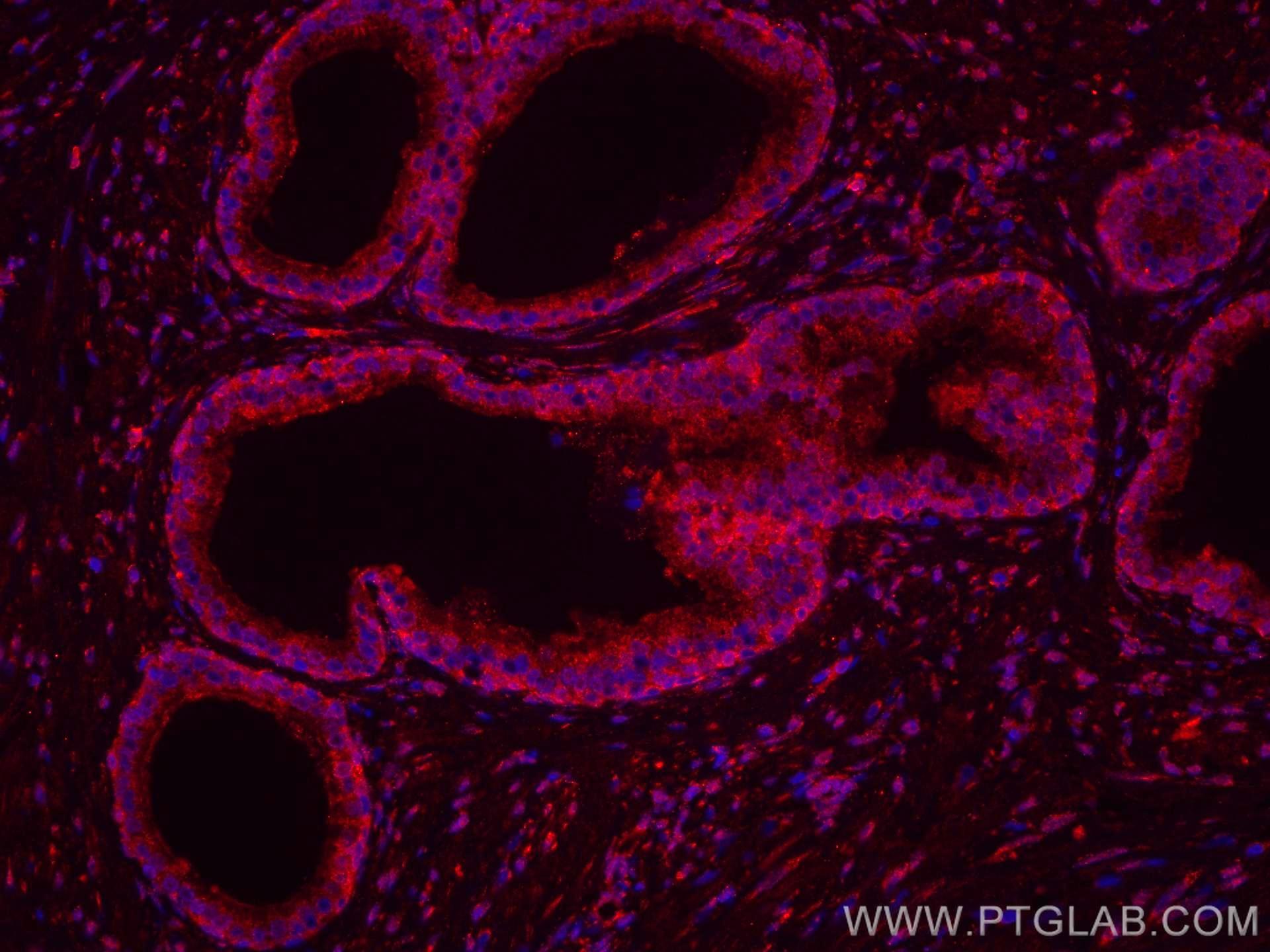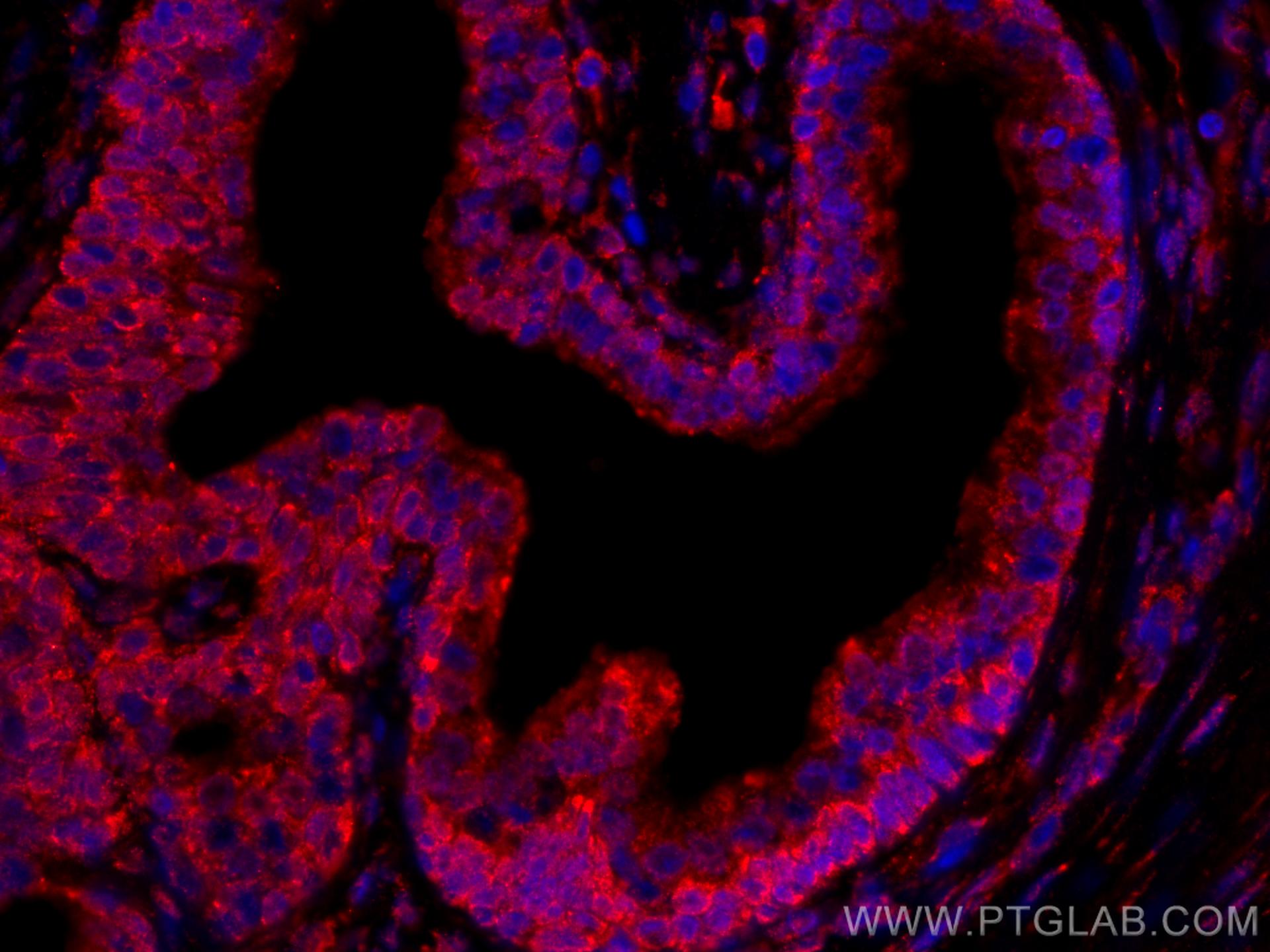- Featured Product
- KD/KO Validated
TAOK3 Monoklonaler Antikörper
TAOK3 Monoklonal Antikörper für IF-P
Wirt / Isotyp
Maus / IgG1
Getestete Reaktivität
human
Anwendung
IF-P
Konjugation
CoraLite®594 Fluorescent Dye
CloneNo.
1A5A9
Kat-Nr. : CL594-67451
Synonyme
Geprüfte Anwendungen
| Erfolgreiche Detektion in IF-P | humanes Prostatakarzinomgewebe |
Empfohlene Verdünnung
| Anwendung | Verdünnung |
|---|---|
| Immunfluoreszenz (IF)-P | IF-P : 1:50-1:500 |
| It is recommended that this reagent should be titrated in each testing system to obtain optimal results. | |
| Sample-dependent, check data in validation data gallery | |
Produktinformation
CL594-67451 bindet in IF-P TAOK3 und zeigt Reaktivität mit human
| Getestete Reaktivität | human |
| Wirt / Isotyp | Maus / IgG1 |
| Klonalität | Monoklonal |
| Typ | Antikörper |
| Immunogen | TAOK3 fusion protein Ag29146 |
| Vollständiger Name | TAO kinase 3 |
| Berechnetes Molekulargewicht | 105 kDa |
| Beobachtetes Molekulargewicht | 100-105 kDa |
| GenBank-Zugangsnummer | BC002756 |
| Gene symbol | TAOK3 |
| Gene ID (NCBI) | 51347 |
| Konjugation | CoraLite®594 Fluorescent Dye |
| Excitation/Emission maxima wavelengths | 588 nm / 604 nm |
| Form | Liquid |
| Reinigungsmethode | Protein-G-Reinigung |
| Lagerungspuffer | PBS with 50% glycerol, 0.05% Proclin300, 0.5% BSA |
| Lagerungsbedingungen | Bei -20°C lagern. Vor Licht schützen. Nach dem Versand ein Jahr stabil. Aliquotieren ist bei -20oC Lagerung nicht notwendig. 20ul Größen enthalten 0,1% BSA. |
Hintergrundinformationen
TAOK3(Serine/threonine-protein kinase TAO3) is also named as DPK, JIK, KDS, MAP3K18 and belongs to the STE Ser/Thr protein kinase family. It acts as an activator of the p38/MAPK14 stress-activated MAPK cascade. In response to DNA damage, it is involved in the G2/M transition DNA damage checkpoint by activating the p38/MAPK14 stress-activated MAPK cascade, probably by mediating phosphorylation of upstream MAP2K3 and MAP2K6 kinases. And this protein can be autophosphorylated(PMID:20949042).
Protokolle
| PRODUKTSPEZIFISCHE PROTOKOLLE | |
|---|---|
| IF protocol for CL594 TAOK3 antibody CL594-67451 | Protokoll herunterladen |
| STANDARD-PROTOKOLLE | |
|---|---|
| Klicken Sie hier, um unsere Standardprotokolle anzuzeigen |



